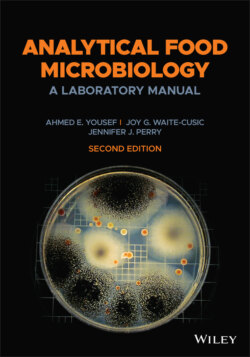Читать книгу Analytical Food Microbiology - Ahmed E. Yousef - Страница 39
Sponge method
ОглавлениеIf the surface to be swabbed is large, or if a microorganism of a low incidence rate in processing environment is sought, a sponge may be used instead of a cotton swab. A natural or synthetic sponge with ~5 × 5 cm contact surface that is free from antimicrobial agents is suitable for this purpose. The sponge can be packed in a heat‐resistant bag or wrapped in aluminum foil and sterilized by the analyst, or purchased prepacked and presterilized from a commercial source. During sampling, the sponge is held aseptically, moistened with 10 ml rinse solution, rubbed against the surface to be sampled and returned to a sterile plastic bag. The sample should be transferred to the laboratory under refrigeration and analyzed without delay. If the purpose of sampling is to detect pathogens, the sponge is transferred to a suitable enrichment broth and the mixture is incubated. When sampling is carried out to quantify environment microbiota, the sponge is mixed with 50‐ or 100‐ml diluent and further dilutions are made. Selected dilutions are then spread on the surface of a suitable agar growth medium, plates are incubated, and the population of the targeted microorganism is counted.
